4 guitar tricks you can learn from Jimmy Page
With Led Zeppelin, Page drew from all quarters of the musical landscape, but his exhilarating style was rooted in the blues
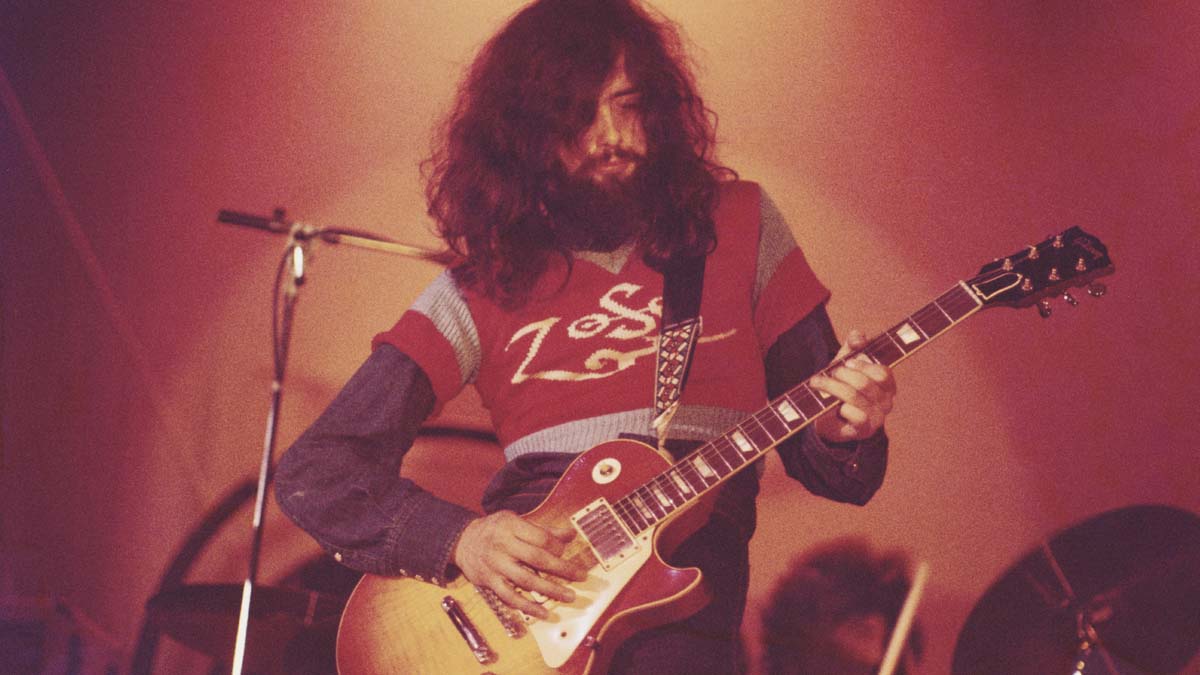
Coming up through skiffle, blues, rock ’n’ roll, folk, then a fairly well-known rock band that encompassed all of this and more, Jimmy Page has never been afraid to take radically different approaches to both his playing and composition.
However, he always manages to put his stamp on everything he does. I’ve transcribed a lot of Jimmy’s playing over the years, and it’s always a challenge to reduce it to strokes of the pen on manuscript paper. His phrasing, timing and pitching is uniquely expressive, and often falls ‘between the cracks’ of standard musical notation.
Usually, I tend to rationalise/quantise the timing but include instructions to lay back or push forward against the beat. Capturing every nuance would be virtually impossible to write or read, and I believe would take us further from the essence of Jimmy’s playing.
Trying to encapsulate his style in a single solo is a tall order but by stealing choice phrases from some of his classic solos (leaning towards the early days) and incorporating them into one of my own, I hope to give a starting point to those who would like to emulate his flamboyant style.
Having said that, listening back to my own solo I seem to have played things a little cautiously, so once you have these ideas under the fingers, I would suggest a more devil-may-care approach! It isn’t a disaster if you miss a note or two, or allow the timing to drift here and there – as long as you can recover.
There are a couple of wide string bends, so don’t be discouraged if these are little uncomfortable when you’re practising the phrases repeatedly, and be aware that Jimmy used very light strings during Led Zeppelin’s heyday. I hope you enjoy the solo and see you next time.
Example 1
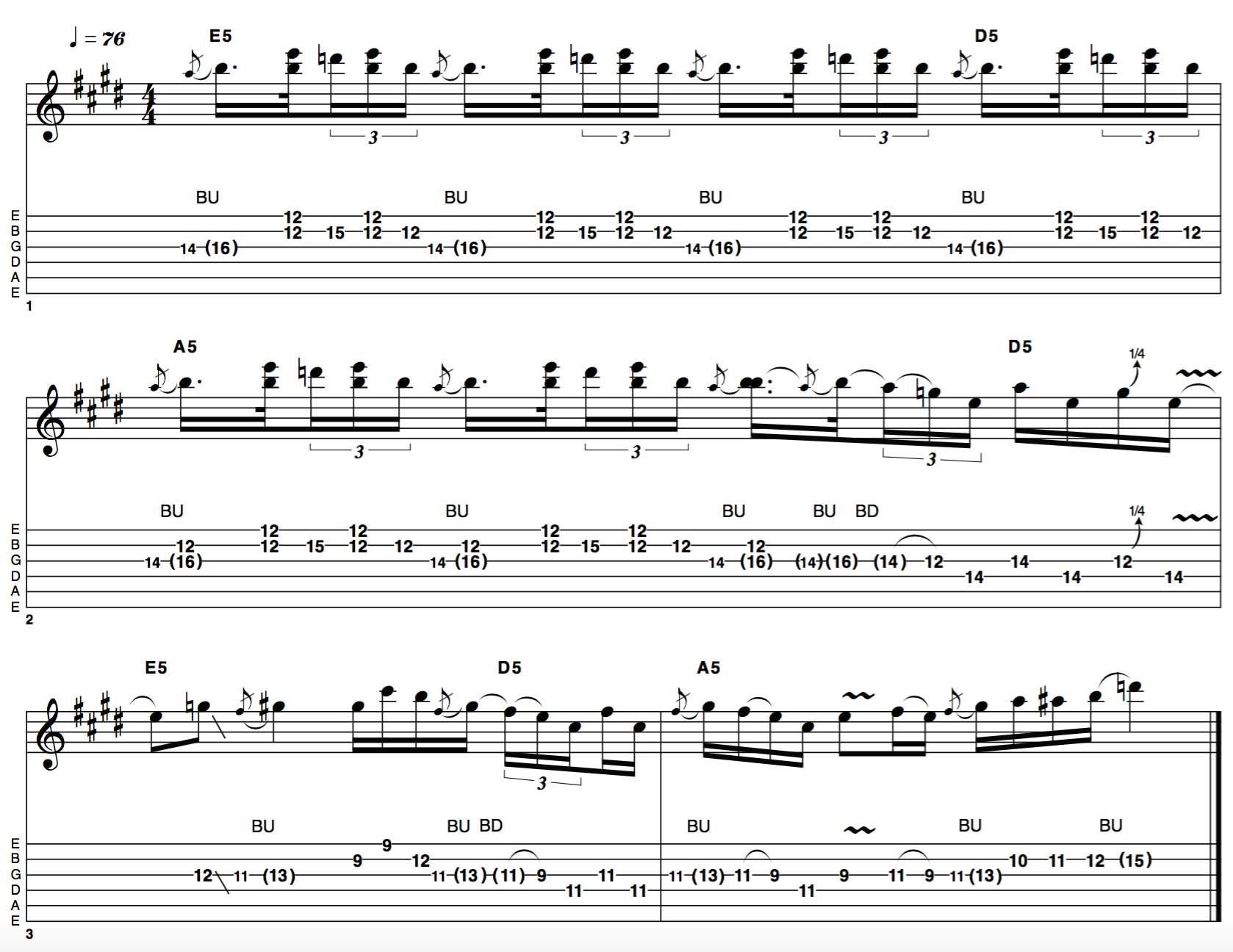
This first example begins with a no-holds-barred Chuck Berry-type repeated phrase. Though the transcription shows six identical repeats, don’t take this too literally.
If you play this in a spirited enough fashion, small irregularities are bound to creep in and this brings us closer to challenging 1968 to ’70 Jimmy Page more closely than earnestly playing through perfectly.
In bar 3, we shift abruptly down three frets to change to E major pentatonic while playing the same scale pattern – this is also classic early Page.
Example 2
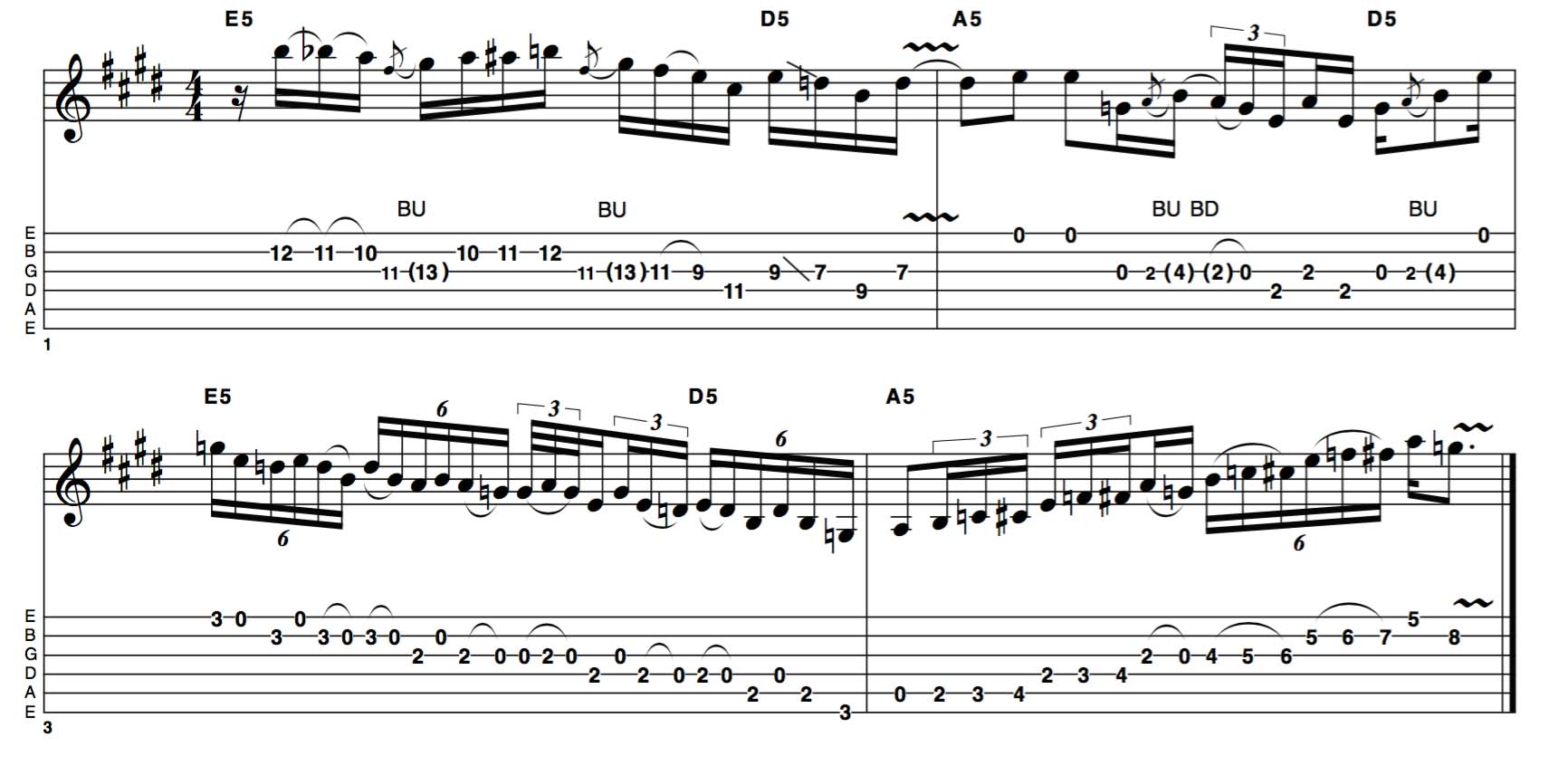
There are essentially three components to this idea, all of which have been heavily favoured by the man himself. Firstly, the chromatic runs mix in with string bends using the major pentatonic scale.
This is followed by a shift down to open position and the E minor pentatonic, where a staggered descending sextuplet pattern leads to an ascending chromatic line mixing alternate picking and legato styles. Check out the solos from Communication Breakdown and Heartbreaker to hear their origin.
Example 3
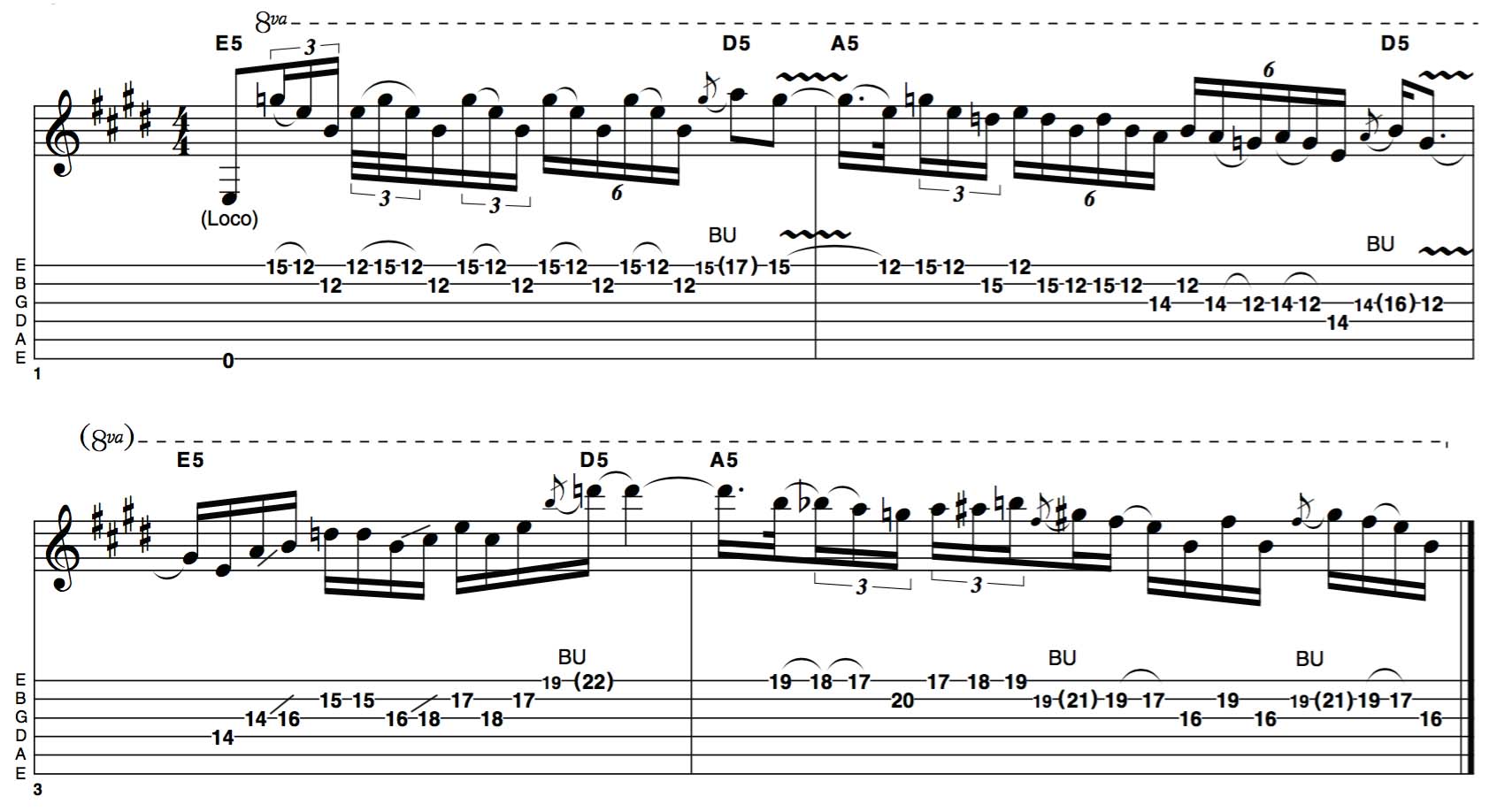
The first lick here is frequently heard on the early albums but also appears at the climax of Jimmy’s solo in Stairway To Heaven. We segue straight into a further descending sextuplet run in the manner of Good Times Bad Times then switch gears to some screaming high-register E major pentatonic, which is meant as a tip of the hat to Whole Lotta Love (as is the backing track).
Example 4
The opening bars of this closing section of the solo start to hint at the more unusual note groupings that Jimmy began to incorporate in his solos by 1972 and ’73. No Quarter is one of the finest examples of this but Since I’ve Been Loving You and In The Light are also worth checking out. We then finish, as we should, with a final descending run and a flourish. Hopefully Jimmy would approve!
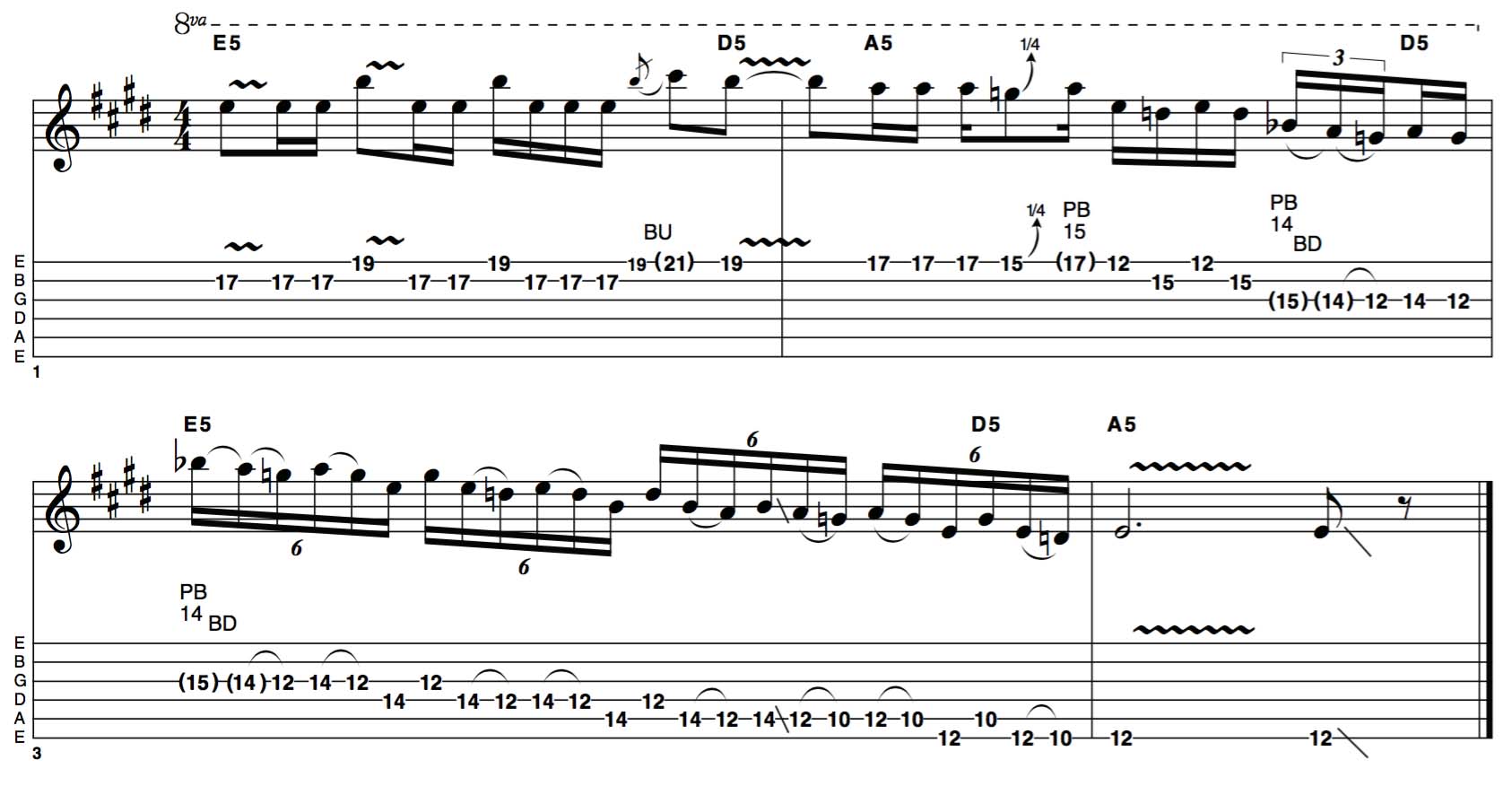
Hear it here
Led Zeppelin I
Jimmy is on fine form as an already experienced session guitarist now given free rein in the recording studio. Much of the Led Zep sound is already fully formed with Jimmy’s solos on Good Times Bad Times, Communication Breakdown and I Can’t Quit You Baby.
Worthy of an honourable mention here is his wonderfully varied and dynamic acoustic playing on Babe I’m Gonna Leave You, which gives an early demonstration of Jimmy’s concept of ‘light and shade’.
Led Zeppelin IV
Considered Zeppelin’s defining album by many, Jimmy’s playing has certainly lost none of its fire, though the intervening years of heavy touring and the recording of two further albums have given him the confidence to develop his unique phrasing, rather than going all out for speed. Black Dog, Rock And Roll and Stairway To Heaven bear this out. While it’s unlikely that you won’t have heard this album before, it’s well worth revisiting!
Houses Of The Holy
Though Led Zeppelin IV is most often cited as the classic Zeppelin album, Houses of The Holy showcases them in excellent form, covering jazz in The Rain Song, reggae in D’yer Mak’er, and folk in Over The Hills and Far Away, the latter featuring a solo that was almost certainly an influence on Aerosmith’s Joe Perry. There is a wealth of classic Page phrasing to be found on The Song Remains the Same and an inspired solo on No Quarter.
Get The Pick Newsletter
All the latest guitar news, interviews, lessons, reviews, deals and more, direct to your inbox!
As well as a longtime contributor to Guitarist and Guitar Techniques, Richard is Tony Hadley’s longstanding guitarist, and has worked with everyone from Roger Daltrey to Ronan Keating.
“There are so many sounds to be discovered when you get away from using a pick”: Jared James Nichols shows you how to add “snap, crackle and pop” to your playing with banjo rolls and string snaps
Don't let chord inversions bamboozle you. It's simply the case of shuffling the notes around








![Joe Bonamassa [left] wears a deep blue suit and polka-dotted shirt and plays his green refin Strat; the late Irish blues legend Rory Gallagher [right] screams and inflicts some punishment on his heavily worn number one Stratocaster.](https://cdn.mos.cms.futurecdn.net/cw28h7UBcTVfTLs7p7eiLe.jpg)


